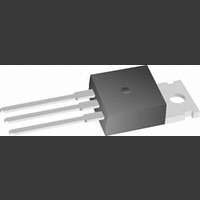LM1086IS-3.3 National Semiconductor, LM1086IS-3.3 Datasheet - Page 9

LM1086IS-3.3
Manufacturer Part Number
LM1086IS-3.3
Description
Linear Voltage Regulator IC
Manufacturer
National Semiconductor
Datasheets
1.LM1086ISX-ADJ.pdf
(15 pages)
2.LM1086ISX-3.3.pdf
(15 pages)
3.LM1086ISX-ADJ.pdf
(15 pages)
Specifications of LM1086IS-3.3
No. Of Pins
3
Output Current
1.5A
Termination Type
Through Hole
Mounting Type
Through Hole
Voltage Regulator Type
LDO Linear
Peak Reflow Compatible (260 C)
No
Supply Voltage
29V
Lead Free Status / RoHS Status
Contains lead / RoHS non-compliant
Available stocks
Company
Part Number
Manufacturer
Quantity
Price
Company:
Part Number:
LM1086IS-3.3
Manufacturer:
NS
Quantity:
1 200
Part Number:
LM1086IS-3.3
Manufacturer:
NS/国半
Quantity:
20 000
Part Number:
LM1086IS-3.3/NOPB
Manufacturer:
NS/国半
Quantity:
20 000
APPLICATION NOTE
To improve this, the load should be tied directly to the output
terminal on the positive side and directly tied to the ground
terminal on the negative side.
When the adjustable regulator is used ( Figure 4 ), the best
performance is obtained with the positive side of the resistor
R1 tied directly to the output terminal of the regulator rather
than near the load. This eliminates line drops from appearing
effectively in series with the reference and degrading regula-
tion. For example, a 5V regulator with 0.05
tween the regulator and load will have a load regulation due
to line resistance of 0.05
near the load the effective line resistance will be 0.05
R2/R1) or in this case, it is 4 times worse. In addition, the
ground side of the resistor R2 can be returned near the
ground of the load to provide remote ground sensing and im-
prove load regulation.
3.0 Protection Diodes
Under normal operation, the LM1086 regulator does not
need any protection diode. With the adjustable device, the
internal resistance between the adjustment and output termi-
nals limits the current. No diode is needed to divert the cur-
rent around the regulator even with a capacitor on the adjust-
ment terminal. The adjust pin can take a transient signal of
the device.
When an output capacitor is connected to a regulator and
the input is shorted, the output capacitor will discharge into
the output of the regulator. The discharge current depends
on the value of the capacitor, the output voltage of the regu-
lator, and rate of decrease of V
the internal diode between the output and input pins can
±
25V with respect to the output voltage without damaging
FIGURE 3. Typical Application using Fixed Output
FIGURE 4. Best Load Regulation using Adjustable
Output Regulator
Regulator
x I
L
. If R1 ( = 125 ) is connected
IN
. In the LM1086 regulator,
(Continued)
resistance be-
DS100948-18
DS100948-19
(1 +
9
withstand microsecond surge currents of 10A to 20A. With
an extremely large output capacitor ( 1000 µf), and with in-
put instantaneously shorted to ground, the regulator could
be damaged. In this case, an external diode is recom-
mended between the output and input pins to protect the
regulator, shown in Figure 5 .
Overload Recovery
Overload recovery refers to regulator’s ability to recover from
a short circuited output. A key factor in the recovery process
is the current limiting used to protect the output from drawing
too much power. The current limiting circuit reduces the out-
put current as the input to output differential increases. Refer
to short circuit curve in the curve section.
During normal start-up, the input to output differential is
small since the output follows the input. But, if the output is
shorted, then the recovery involves a large input to output
differential. Sometimes during this condition the current lim-
iting circuit is slow in recovering. If the limited current is too
low to develop a voltage at the output, the voltage will stabi-
lize at a lower level. Under these conditions it may be neces-
sary to recycle the power of the regulator in order to get the
smaller differential voltage and thus adequate start up condi-
tions. Refer to curve section for the short circuit current vs.
input differential voltage.
Thermal Considerations
ICs heats up when in operation, and power consumption is
one factor in how hot it gets. The other factor is how well the
heat is dissipated. Heat dissipation is predictable by knowing
the thermal resistance between the IC and ambient (
Thermal resistance has units of temperature per power
(C/W). The higher the thermal resistance, the hotter the IC.
The LM1086 specifies the thermal resistance for each pack-
age as junction to case (
tance to ambient (
added, one for case to heat-sink (
to ambient (
as follows:
T
T
P
consumption is calculated as follows:
J
J
D
is junction temperature, T
= T
is the power consumption of the device. Device power
I
P
IN
D
FIGURE 5. Regulator with Protection Diode
A
= I
= (V
+ P
L
D
+ I
IN
HA
(
−V
G
). The junction temperature can be predicted
JC
OUT
+
JA
) I
), two other thermal resistance must be
CH
L
+ V
+
JC
). In order to get the total resis-
IN
HA
A
I
G
is ambient temperature, and
) = T
CH
A
) and one for heatsink
+ P
D
JA
www.national.com
DS100948-15
JA
).















